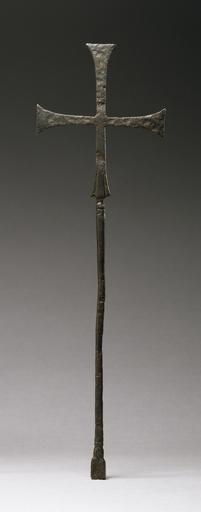MAKE A MEME
View Large Image

| View Original: | Ethiopian_-_Hand_Cross_-_Walters_52296.jpg (706x1799) | |||
| Download: | Original | Medium | Small | Thumb |
| Courtesy of: | commons.wikimedia.org | More Like This | ||
| Keywords: Ethiopian - Hand Cross - Walters 52296.jpg Ethiopian metal hand crosses are typically constructed from silver brass or iron that has been hammered into shape rather than cast using the lost-wax method These objects draw their formal inspiration from processional crosses and their creators often imitated styles that had been developed at great religious centers such as Lalibala Although their reliance on pre-existing models makes hand crosses difficult to date these objects were an important means of transmitting local styles particularly as they were designed to be portable Because crosses were regularly used in the daily lives of Ethiopian priests they were exposed to a greater degree of wear and they often reveal evident signs of their use The scratches that mark the surface of this cross testify to its service in the hands of its owner This cross's modeled arms eloquently display the simplicity of the designs that characterize these objects while the fluting along the shaft adds an element of refinement century 11 12 Medieval cast metal cm 37 5 10 4 0 8 accession number 52 296 2543 Knopfelmacher Collection New York William Wright Gallery New York Nooter Collection 1990 Walters Art Museum 1997 by gift Gift of Nancy and Robert Nooter 1997 African Zion The Sacred Art of Ethiopia The Walters Art Gallery Baltimore 1993-1994 Angels of Light Ethiopian Art from the Walters Art Museum Birmingham Museum of Art Birmingham; Smith College Museum of Art Northampton; Museum of Biblical Art New York 2006-2007 place of origin Ethiopia Walters Art Museum license Art of Ethiopia in the Walters Art Museum Crosses from Ethiopia Media contributed by the Walters Art Museum needs category review | ||||